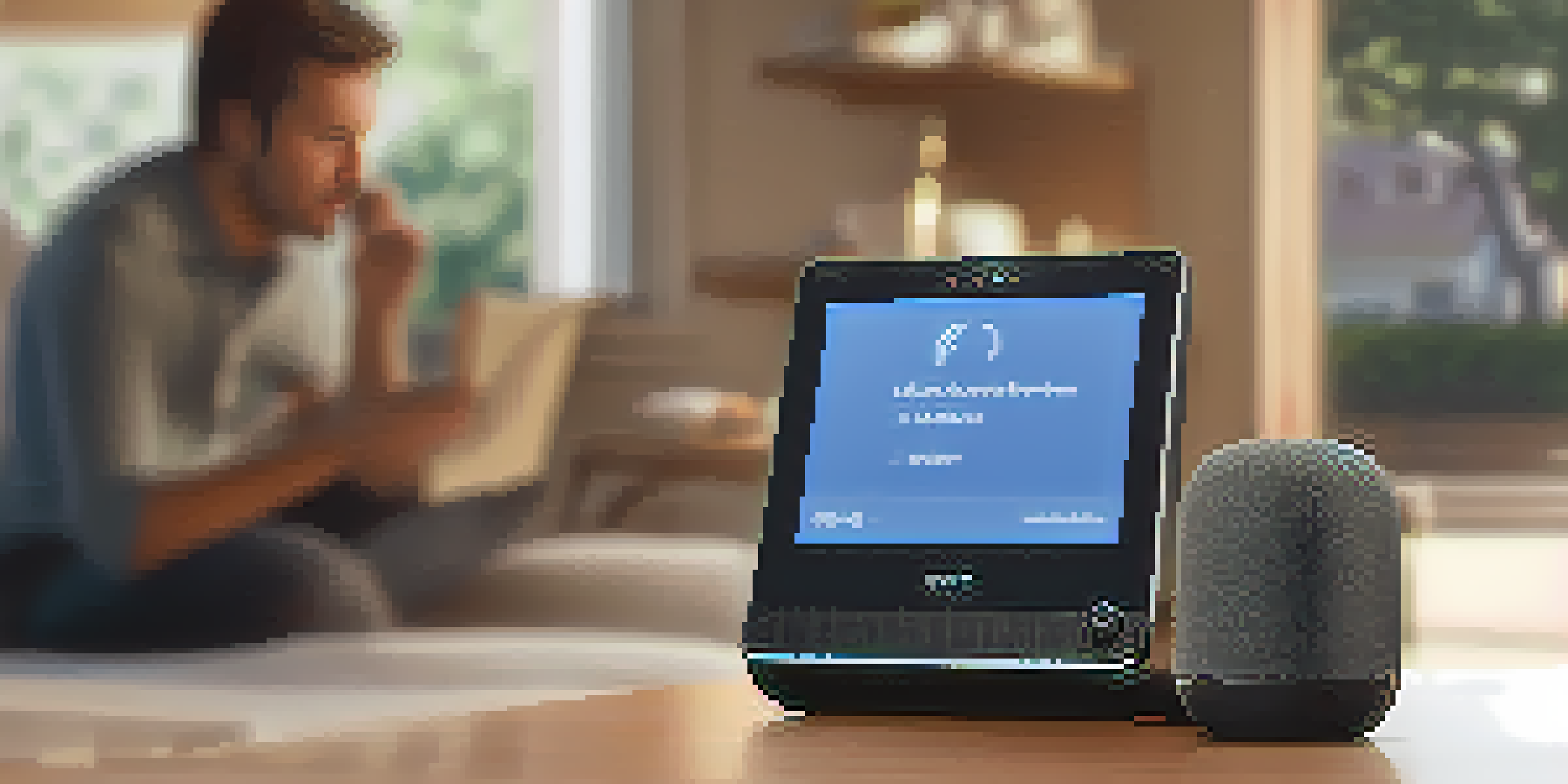Voice Recognition: The Role of Sound in Biometric Security

Understanding Voice Recognition Technology in Security
Voice recognition technology uses unique vocal traits to identify individuals, much like a fingerprint. This technology relies on the distinct characteristics of a person's voice, including pitch, tone, and cadence. By analyzing these factors, systems can accurately authenticate users, making it a powerful tool in biometric security.
Voice recognition is not just about technology; it's about understanding and respecting the unique nature of each individual’s voice.
One of the fascinating aspects of voice recognition is its ability to evolve with the user. As our voices can change due to age, health, or environment, modern systems are designed to adapt and remain accurate over time. This adaptability enhances security, as the system learns and adjusts to the user's voice variations.
Moreover, voice recognition can be easily integrated into various devices, from smartphones to smart home systems. This versatility not only enhances user convenience but also broadens the scope of biometric security applications, allowing for seamless and secure access across multiple platforms.
How Voice Biometrics Works: The Basics Explained
At its core, voice biometrics captures a voice sample, which is then converted into a digital model. This model includes a range of vocal features that are analyzed and stored as a voiceprint. It works similarly to how a fingerprint is scanned and stored, providing a secure means of identification.

When a user attempts to authenticate, the system compares the live voice sample to the stored voiceprint. If the two match within a certain threshold, access is granted. This process is quick and efficient, often taking just a few seconds to complete, making it ideal for real-time applications.
Voice Recognition Enhances Security
Voice recognition technology offers a secure and user-friendly authentication method by analyzing unique vocal traits.
Additionally, voice biometrics can incorporate machine learning algorithms that enhance its accuracy over time. By continually analyzing new voice samples, the technology can improve its ability to distinguish between legitimate users and potential impostors, thus strengthening security measures.
Benefits of Voice Recognition in Biometric Security Systems
One of the primary benefits of voice recognition is its user-friendly nature. Unlike traditional passwords or PINs, which can be forgotten or stolen, a person's voice is always with them. This inherent convenience promotes smoother user experiences and reduces the potential for security breaches.
In the digital age, the voice is becoming a key identifier, and leveraging this technology can enhance security and user experience.
Voice recognition systems also offer a high level of security. Since each individual's voice is unique, replicating someone else's voice accurately is a formidable challenge. This feature greatly minimizes the risk of unauthorized access compared to traditional authentication methods.
Moreover, the implementation of voice recognition can streamline various processes, from banking transactions to accessing secure facilities. By simplifying authentication, organizations can enhance operational efficiency while maintaining robust security standards.
Challenges of Implementing Voice Recognition Technologies
Despite its advantages, voice recognition technology is not without challenges. One significant issue is background noise, which can interfere with accurate voice capture. Environments with high levels of ambient noise may require specialized hardware or noise-canceling features to ensure clear recognition.
Another challenge is the potential for voice spoofing, where an imposter attempts to mimic a legitimate user's voice. To combat this, systems must incorporate advanced detection techniques, such as analyzing speech patterns and vocal nuances, to differentiate between genuine and fraudulent attempts.
Challenges in Voice Recognition
Despite its benefits, voice recognition faces challenges such as background noise and potential voice spoofing.
Additionally, user acceptance can be a hurdle. Some individuals may feel uncomfortable with voice recognition due to privacy concerns or a lack of understanding of the technology. Educating users about the safety and benefits of voice biometrics is crucial to encourage its adoption.
Real-World Applications of Voice Recognition Technology
Voice recognition is already making waves in various industries. In banking, for instance, customers can securely access their accounts through voice commands, eliminating the need for cumbersome passwords. This not only enhances security but also improves customer satisfaction through convenience.
In healthcare, voice recognition assists medical professionals in documenting patient interactions. By allowing doctors to dictate notes directly into electronic health records, the technology saves time while ensuring accuracy in patient information. This application exemplifies how voice recognition can streamline workflows in critical settings.
Moreover, smart home devices utilize voice recognition to enhance user interaction. From controlling lights to adjusting thermostats, users can manage their environments simply by speaking. This not only promotes accessibility but also demonstrates the versatility of voice recognition across different contexts.
The Future of Voice Recognition in Biometric Security
Looking ahead, the future of voice recognition in biometric security appears promising. As technology advances, we can expect improvements in accuracy, speed, and user experience. Innovations such as multi-factor authentication, combining voice with other biometric data, may become common, enhancing security even further.
Additionally, as artificial intelligence continues to evolve, voice recognition systems will likely become more adept at understanding context and nuances in speech. This capability could allow for more personalized user interactions, making the technology even more appealing for daily use.
Future Innovations in Voice Tech
The future of voice recognition in security looks bright, with advancements in AI promising improved accuracy and user experiences.
Furthermore, as privacy concerns grow, the development of transparent policies regarding data usage and storage will be crucial. Building user trust through clear communication and robust security measures will be essential for widespread adoption of voice recognition technology in biometric security.
Conclusion: The Sound of Security in the Digital Age
In summary, voice recognition represents a significant advancement in biometric security, offering unique benefits that traditional methods lack. Its ability to provide user-friendly, secure authentication makes it an attractive option for both consumers and organizations. However, addressing its challenges will be vital for its continued growth and acceptance.
As we navigate the complexities of digital security, voice recognition stands out as a compelling solution that enhances accessibility without compromising safety. By continuing to innovate and educate users, we can harness this technology's full potential, paving the way for a more secure future.

Ultimately, the role of sound in biometric security is not just about authentication; it's about creating a seamless and secure user experience in our increasingly digital world. Embracing voice recognition technology could be a key step toward achieving that goal.